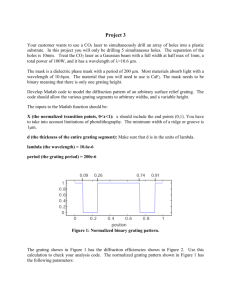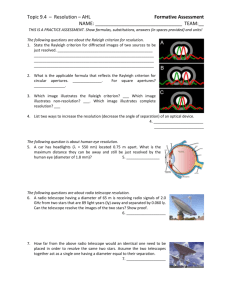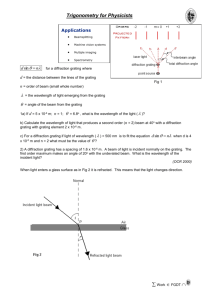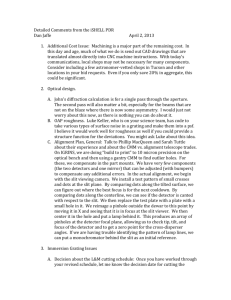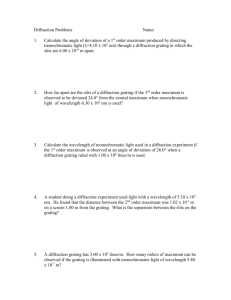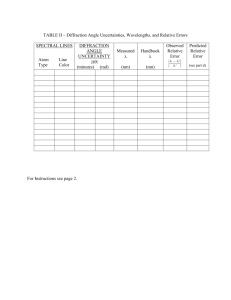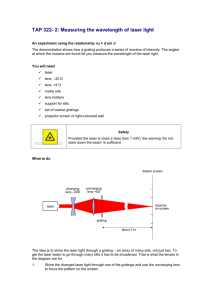Word file: Higher Physics: Diffraction questions
advertisement
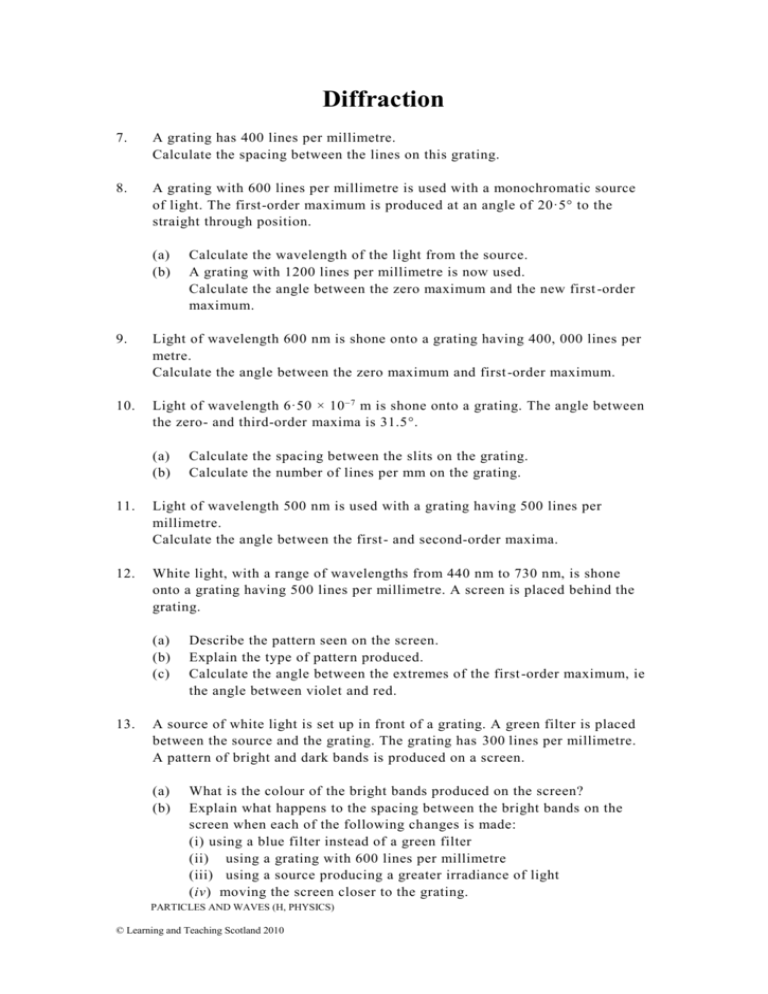
Diffraction 7. A grating has 400 lines per millimetre. Calculate the spacing between the lines on this grating. 8. A grating with 600 lines per millimetre is used with a monochromatic source of light. The first-order maximum is produced at an angle of 20·5 to the straight through position. (a) (b) Calculate the wavelength of the light from the source. A grating with 1200 lines per millimetre is now used. Calculate the angle between the zero maximum and the new first -order maximum. 9. Light of wavelength 600 nm is shone onto a grating having 400, 000 lines per metre. Calculate the angle between the zero maximum and first -order maximum. 10. Light of wavelength 6·50 × 10 7 m is shone onto a grating. The angle between the zero- and third-order maxima is 31.5. (a) (b) Calculate the spacing between the slits on the grating. Calculate the number of lines per mm on the grating. 11. Light of wavelength 500 nm is used with a grating having 500 lines per millimetre. Calculate the angle between the first- and second-order maxima. 12. White light, with a range of wavelengths from 440 nm to 730 nm, is shone onto a grating having 500 lines per millimetre. A screen is placed behind the grating. (a) (b) (c) 13. Describe the pattern seen on the screen. Explain the type of pattern produced. Calculate the angle between the extremes of the first -order maximum, ie the angle between violet and red. A source of white light is set up in front of a grating. A green filter is placed between the source and the grating. The grating has 300 lines per millimetre. A pattern of bright and dark bands is produced on a screen. (a) (b) What is the colour of the bright bands produced on the screen? Explain what happens to the spacing between the bright bands on the screen when each of the following changes is made: (i) using a blue filter instead of a green filter (ii) using a grating with 600 lines per millimetre (iii) using a source producing a greater irradiance of light (iv) moving the screen closer to the grating. PARTICLES AND WAVES (H, PHYSICS) © Learning and Teaching Scotland 2010 2. (a) (b) (c) AQ = 12·4 m, BQ = 13 m 0·6 m 550 Hz 3. (a) (b) (c) (d) (e) (f) 3·0 × 3·0 × 6·0 × 1·5 × 7·5 × 0m 4. Wavelength = 3·0 × 10 2 m Frequency = 1·0 × 10 10 Hz 5. (a) (b) (c) 6. 0·03 m 7. 2·5 × 10 6 m 8. (a) (b) 9. 13·9º 10. (a) (b) 11. 15·5º 12. (c) 10 2 10 2 10 2 10 2 10 2 m m m m m 0·016 m 3·2 × 10 2 m 9·4 × 10 9 Hz 5·84 × 10 7 m 44·5º 3·73 × 10 6 m 268 8·7º PARTICLES AND WAVES (H, PHYSICS) © Learning and Teaching Scotland 2010

